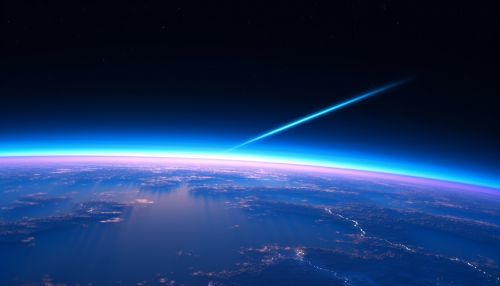History of the Ozone Hole Discovery
Early Observations and Studies
The story of the discovery of the ozone hole begins with the scientific exploration of the Earth's atmosphere. In the late 19th century, scientists began to understand the composition and structure of the atmosphere. In 1913, French physicists Charles Fabry and Henri Buisson discovered the ozone layer through the use of spectroscopy, a technique that allows the identification of a substance by the study of its light absorption spectrum.


In the 1920s and 1930s, further studies were conducted to understand the distribution and concentration of ozone in the atmosphere. The British meteorologist Gordon Dobson developed the Dobson spectrophotometer, a device that measures the total amount of ozone in a column of air from the ground to the top of the atmosphere. The unit of measurement for atmospheric ozone, the Dobson Unit, is named in his honor.
Emergence of the Ozone Hole
The term "ozone hole" was first used in a scientific context in a paper published in 1985 by British Antarctic Survey (BAS) scientists Joseph Farman, Brian Gardiner, and Jonathan Shanklin. Their research, conducted at the Halley and Rothera research stations in Antarctica, revealed a dramatic decrease in ozone levels during the Antarctic spring.
The scientists had been monitoring the atmospheric ozone since the 1950s as part of the International Geophysical Year, a global effort to study the Earth's physical properties. They noticed that while the ozone levels remained relatively stable for several decades, there was a sharp drop in the levels in the early 1980s. This drop was so significant that they initially suspected a fault in their equipment. However, after cross-checking with other monitoring stations, they confirmed that the decrease was real and termed it as the "ozone hole".
Causes of the Ozone Hole
The main cause of the ozone hole is the release of certain man-made chemicals, particularly chlorofluorocarbons (CFCs) and halons. These chemicals contain chlorine and bromine atoms, which can destroy ozone in the presence of sunlight. The process of ozone depletion involves complex chemical reactions that occur on the surface of polar stratospheric clouds (PSCs). These clouds form in the extremely cold conditions of the polar winter and provide a surface for the reactions to take place.
The role of CFCs and other ozone-depleting substances (ODS) in the formation of the ozone hole was first proposed by chemists Mario Molina and F. Sherwood Rowland in the early 1970s. Their work, which earned them the Nobel Prize in Chemistry in 1995, highlighted the potential environmental impact of these chemicals and led to international efforts to reduce their use.
Impact of the Ozone Hole
The depletion of the ozone layer has serious implications for life on Earth. The ozone layer plays a crucial role in protecting life on Earth by absorbing the majority of the Sun's harmful ultraviolet-B (UV-B) radiation. Increased levels of UV-B reaching the Earth's surface can cause skin cancer and cataracts in humans, harm to aquatic ecosystems, and damage to certain types of crops and other plants.
Measures to Protect the Ozone Layer
In response to the growing concern about the depletion of the ozone layer, the international community took action to reduce the production and consumption of ODS. The Montreal Protocol on Substances that Deplete the Ozone Layer, adopted in 1987, is a landmark agreement that has been successful in phasing out the majority of ODS. The Protocol is considered one of the most successful environmental treaties to date, and it has played a significant role in the gradual recovery of the ozone layer.
Current Status and Future Projections
Since the implementation of the Montreal Protocol, there has been a significant decrease in the levels of ODS in the atmosphere. Satellite and ground-based measurements show that the ozone hole has been gradually shrinking since the late 1990s. According to the World Meteorological Organization (WMO), if the current rate of recovery continues, the ozone hole could be completely healed by the middle of the 21st century.
However, the recovery of the ozone layer is a slow process, and it is still vulnerable to new threats. Recent studies have identified the increasing emissions of certain 'short-lived' ODS, not controlled by the Montreal Protocol, as a potential risk to the ozone layer. Continued monitoring and research are essential to ensure the protection of the ozone layer for future generations.
